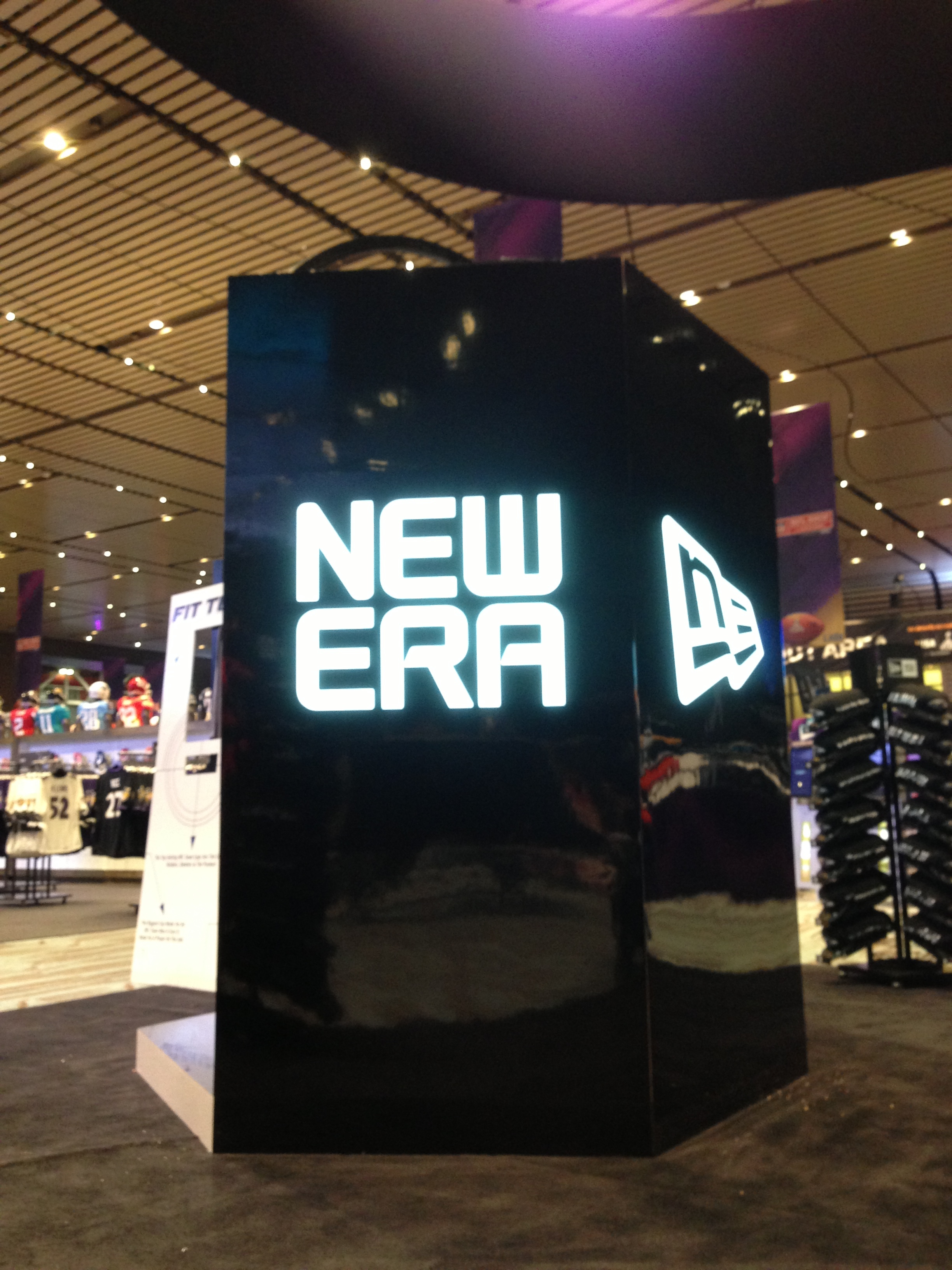kinect fitpod
new era, 2013 | Retail installation
New Era — the leading hat brand — hired us to create a technology driven way to get fans sized for its iconic caps at Super Bowl XLVII.
Shopping for a fitted cap isn’t as common as shopping for jeans, and many people don’t know their head sizes. In retail, tape-measuring a customer’s head is still the prevailing practice, which hasn’t changed since the company’s inception in 1920.
1. Discovery
In our research to find improvement opportunities, we found a few interesting patterns in the existing hat buying experience.
Newbies aren’t the only ones unaware of their hat sizes. Even hat owners forget.
Different styles mean people have different size preferences (e.g. customers who like wearing flat brims need bigger sizes)
Hat-sizing is awkward. A stranger is touching your face and head.
Retailers do not maintain a relationship with sized customers; there is no saving of preferences or purchases.
DISCLAIMER
Some information has been redacted and obfuscated in this case study to comply with my non-disclosure agreement. Opinions and analyses in this case study are my own and do not necessarily reflect the views of my past employers.
tl;dr
I researched the hat purchasing retail process and collaborated with creative technologists to design a more pleasant and eye-catching hat-size measuring tool for teenage sports fans buying their first caps.
AGENCy
Relevent
Brooklyn Research
Team
Ian Cleary, VP Innovation
Len Yeh, UX Design
2. Insight
It became apparent that “difficulties” of head measurement aren’t laborious, but rather psychologically unpleasant. Ironically, employees and brand reps are sources of anxiety. Many of us can relate — just think of that time you didn’t want to be bothered while shopping, or found it fussy to bother the staff. If you did get help, you felt the pressure to make a purchase.
All of this is worsened by the old school tape-measuring technique. Best case, it’s a bit awkward. Worst case, it’s invasive and unhygienic for customers.
3. Design
Shifting the brand and customer interaction
Our hypothesis was that a small paradigm shift could decrease the anxiety for customers. By reframing the “measuring” step as something you get to do, rather than something you had to do, the brand reps could initiate and invite customers to something intriguing without being overbearing.
We started by analyzing this familiar initial interaction:
The customer is already implicitly saying "no" to our question. It wastes a question and sets customers down a negative path. Instead, we can assume customers want to browse and just invite them to get sized on their own time. This removes the "no" response and helps customers think beyond browsing — they're now expecting to get measured. We just needed to make sure the thing we build for sizing actually looked enticing.
Finding the narrative and technology
While concepting, we decided to solve the “touch” problem with motion-sensing Microsoft Kinect technology that captured a user’s height, face, and head. Our inspiration came from a few buzzy fashion companies at the time like BodyMetrics, who created body scanners for department stores. It promised to be flexible, convenient, and futuristic.
With those traits in mind, one of our moodboards — a science fiction, techy aesthetic — began to stand out. Iron Man, Star Trek, and TRON: Legacy were top of mind. We envisioned a type of “fitting pod,” reminiscent of something on a space ship that vibed with our target of male teenage sports fans.
We started with the customer service interaction, not with technology.
↵
Creating anticipation
With the technology in place, we needed to heighten the experience. While our setup could be done “invisibly” without an interface, doing so removed feedback and entertaining interactions. The unfamiliar experience felt lackluster; we didn’t want people to step on and off a pad, only to think “Did anything even happen?”
It had to be fun, so we counterintuitively increased the time it took and developed animations that seemed like the fitpod was “thinking.” A touchscreen also doubled as an interface for customers to email their sizes to themselves and opt in to New Era communication.
Motion & Interaction Test
Our collaborators on the Brooklyn Research team developed this animation
↲
Reflections
The New Era FitPod became a fun addition to Super Bowl weekend and a few thousand attendees passed through to get sized. This became one of my favorite projects at the time; it involved a real business challenge, and the solution required us to balance digital storytelling with spatial design and live customer service representatives (hurrah for human interaction!).
However, a shortcoming of work-for-hire projects is often the lack of opportunity to measure design solutions long term. It's a bigger challenge to seek out more product-centered design project and focus on a set of problems to improve over time. While we met our social media marketing OKRs, did we actually make hat shopping more enjoyable? Did CRM leads from the experience lead to more sales beyond 6 months? Is this something that could have feasibly spread to retail stores around the world? As time passed, the steady disappearance of BodyMetrics and similar companies suggest that ultimately this might have ended up a fruitless experiment.






